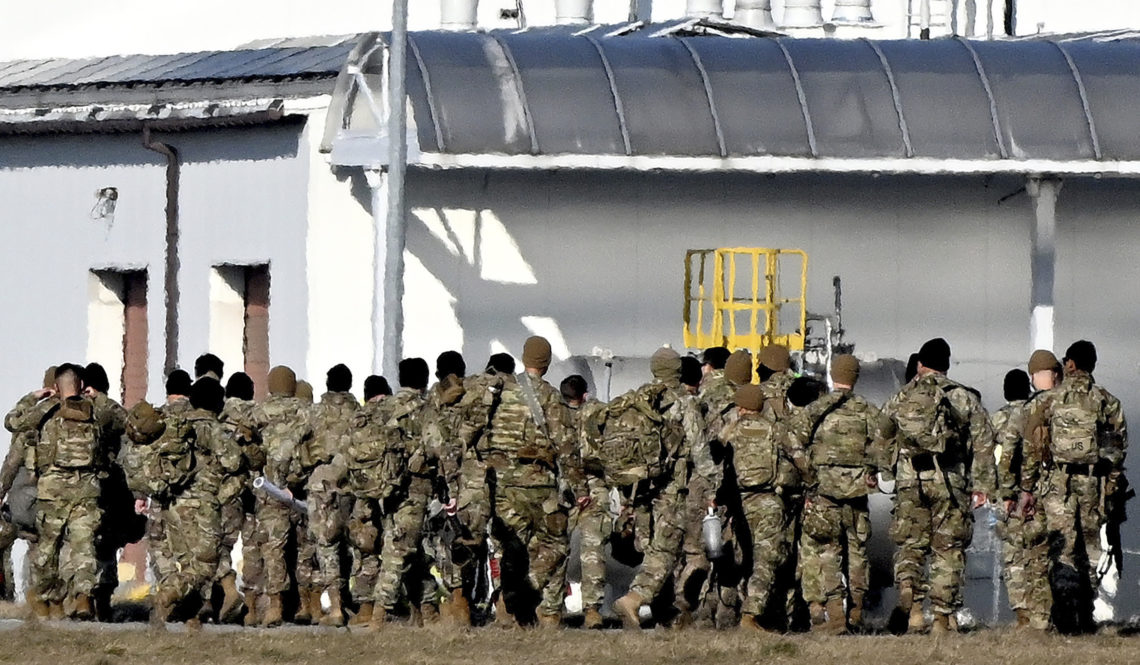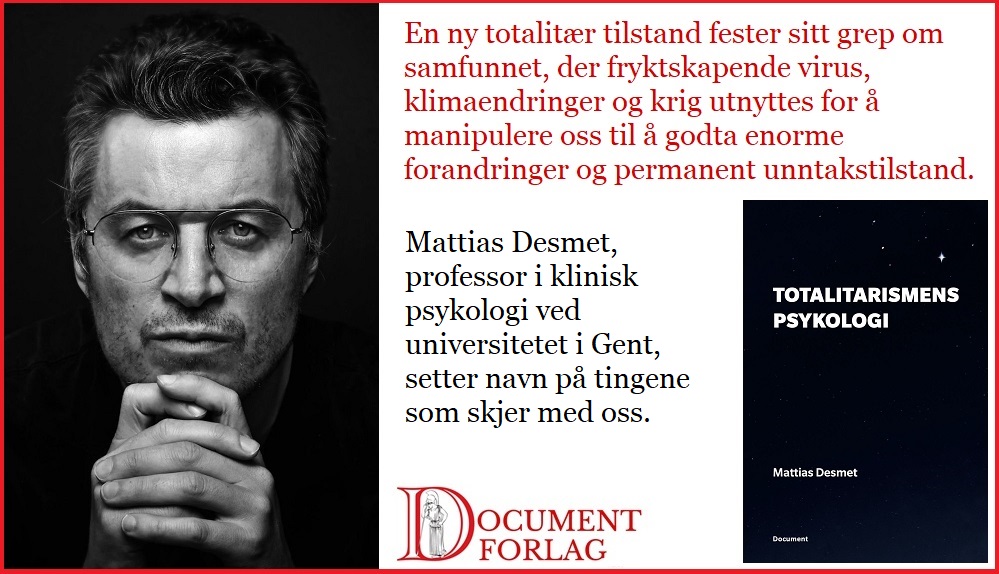Et knippe tidligere amerikanske tjenestemenn, diplomater og militære, skriver i et brev at USA er på kurs mot atomkrig med Russland. Krigen er allerede en katastrofe med hundretusener døde og et ødelagt land. En exit-strategi er ikke mulig å få øye på. I stedet har Biden skrevet ut en blankosjekk til Kyiv. -As long as it takes.
Brevet er gjengitt i New York Times og mange andre steder.
En gang i tiden var uttrykket «duer» og «hauker» vanlig om amerikanske politikere. Nå er alle hauker, men også mediene har tatt krigspartiets side. Opposisjonen sliter med å komme til orde.
Underskriverne erkjenner at Putin var den som invaderte. Men de mener at USA og Nato bærer et stort ansvar gjennom å rykke frem til Russlands grenser, noe utenriksminister James Baker i sin tid lovte de ikke skulle gjøre.
The immediate cause of this disastrous war in Ukraine is Russia’s invasion. Yet the plans and actions to expand NATO to Russia’s borders served to provoke Russian fears. And Russian leaders made this point for 30 years. A failure of diplomacy led to war. Now diplomacy is urgently needed to end the Russia-Ukraine War before it destroys Ukraine and endangers humanity.
Diplomatene går inn for «strategisk empati», man må kunne se saken fra motstanderens synspunkt. Mens vestlige medier tidligere forsto russisk frykt for omringing, hører man sjelden slike toner idag.
Russia’s current geopolitical anxiety is informed by memories of invasion from Charles XII, Napoleon, the Kaiser and Hitler. U.S. troops were among an Allied invasion force that intervened unsuccessfully against the winning side in Russia’s post-World War I civil war. Russia sees NATO enlargement and presence on its borders as a direct threat; the U.S. and NATO see only prudent preparedness. In diplomacy, one must attempt to see with strategic empathy, seeking to understand one’s adversaries. This is not weakness: it is wisdom.
Underskriverne kritiserer Joe Biden for å ha skrevet ut en blanco-fullmakt til Ukraina. Biden har lovet å støtte deres kamp «så lenge det behøves». Men hvis Kyiv akter å gjenerobre alle områder, også Krim, er det duket for en krig uten ende.
We consider President Biden’s promise to back Ukraine “as long as it takes” to be a license to pursue ill-defined and ultimately unachievable goals. It could prove as catastrophic as President Putin’s decision last year to launch his criminal invasion and occupation. We cannot and will not endorse the strategy of fighting Russia to the last Ukrainian.
Vesten har et helt annet syn på Natos ekspansjon enn Russland og brevskriverne sier det er nødvendig å se konflikten med Moskvas øyne.
As the Soviet Union collapsed and the Cold War ended, U.S. and Western European leaders assured Soviet and then Russian leaders that NATO would not expand toward Russia’s borders. “There would be no extension of…NATO one inch to the east,” U.S. Secretary of State James Baker told Soviet leader Mikhail Gorbachev on February 9, 1990. Similar assurances from other U.S. leaders as well as from British, German and French leaders throughout the 1990s confirm this.
Since 2007, Russia has repeatedly warned that NATO’s armed forces on Russian borders were intolerable – just as Russian forces in Mexico or Canada would be intolerable to the U.S. now, or as Soviet missiles in Cuba were in 1962. Russia further singled out NATO expansion into Ukraine as especially prov
Hvorfor ignorerte Washington advarslene, både fra russerne og fra vestlige diplomater? Det var plenty av dem.
Again, even as the Cold War ended, U.S. diplomats, generals and politicians were warning of the dangers of expanding NATO to Russia’s borders and of maliciously interfering in Russia’s sphere of influence. Former Cabinet officials Robert Gates and William Perry issued these warnings, as did venerated diplomats George Kennan, Jack Matlock and Henry Kissinger. In 1997, fifty senior U.S. foreign policy experts wrote an open letter to President Bill Clinton advising him not to expand NATO, calling it “a policy error of historic proportions.” President Clinton chose to ignore these warnings.
Den nåværende lederen for CIA, William Burns, var ambassadør i Moskva. Han skrev et telegram hjem i 2008 der han advarte i sterke ordelag mot å innlemme Ukraina.
“Ukraine and Georgia’s NATO aspirations not only touch a raw nerve in Russia, they engender serious concerns about the consequences for stability in the region. Not only does Russia perceive encirclement, and efforts to undermine Russia’s influence in the region, but it also fears unpredictable and uncontrolled consequences which would seriously affect Russian security interests. Experts tell us that Russia is particularly worried that the strong divisions in Ukraine over NATO membership, with much of the ethnic-Russian community against membership, could lead to a major split, involving violence or at worst, civil war. In that eventuality, Russia would have to decide whether to intervene; a decision Russia does not want to have to face.”
Forfatterne beklager at amerikansk utenrikspolitikk er blitt militarisert. Våpenprodusentene brukte titalls millioner på lobbyvirksomhet for utvidelse av Nato. Pengene gikk også til valgkamper. De fikk viljen sin. Krigspartiet triumferte.
Men ser man på rullebladet i Irak og Afghanistan går regnskapet i minus. Hva er det USA har etterlatt seg? Likevel kalte Pentagon-talsmann John Kirby tilbaketrekkingen fra Kabul for vellykket.
NATO expansion, in sum, is a key feature of a militarized U.S. foreign policy characterized by unilateralism featuring regime change and preemptive wars. Failed wars, most recently in Iraq and Afghanistan, have produced slaughter and further confrontation, a harsh reality of America’s own making. The Russia-Ukraine War has opened a new arena of confrontation and slaughter. This reality is not entirely of our own making, yet it may well be our undoing, unless we dedicate ourselves to forging a diplomatic settlement that stops the killing and defuses tensions.
Forfatterne har laget en kronologi over milepæler på veien mot krig.
1990 – U.S. assures Russia that NATO will not expand towards its border “…there would be no extension of…NATO one inch to the east,” says US Secretary of State James Baker.
1996 – U.S. weapons manufacturers form the Committee to Expand NATO, spending over $51 million lobbying Congress.
1997 – 50 foreign policy experts including former senators, retired military officers and diplomats sign an open letter stating NATO expansion to be “a policy error of historic proportions.”
1999 – NATO admits Hungary, Poland and the Czech Republic to NATO. U.S. and NATO bomb Russia’s ally, Serbia.
2001 – U.S. unilaterally withdraws from the Anti-Ballistic Missile Treaty.
2004 – Seven more Eastern European nations join NATO. NATO troops are now directly on Russia’s border.
2004 – Russia’s parliament passed a resolution denouncing NATO’s expansion. Putin responded by saying that Russia would “build our defense and security policy correspondingly.”
2008 – NATO leaders announced plans to bring Ukraine and Georgia, also on Russia’s borders, into NATO.
2009 – U.S. announced plans to put missile systems into Poland and Romania.
2014 – Legally elected Ukrainian president, Viktor Yanukovych, fled violence to Moscow. Russia views ouster as a coup by U.S. and NATO nations.
2016 – U.S. begins troop buildup in Europe.
2019 – U.S. unilaterally withdraws from Intermediate Nuclear Forces Treaty.
2020 – U.S. unilaterally withdraws from Open Skies Treaty.
2021 – Russia submits negotiation proposals while sending more forces to the border with Ukraine. U.S. and NATO officials reject the Russian proposals immediately.
Feb 24, 2022 – Russia invades Ukraine, starting the Russia-Ukraine War.
https://eisenhowermedianetwork.org/russia-ukraine-war-peace/







